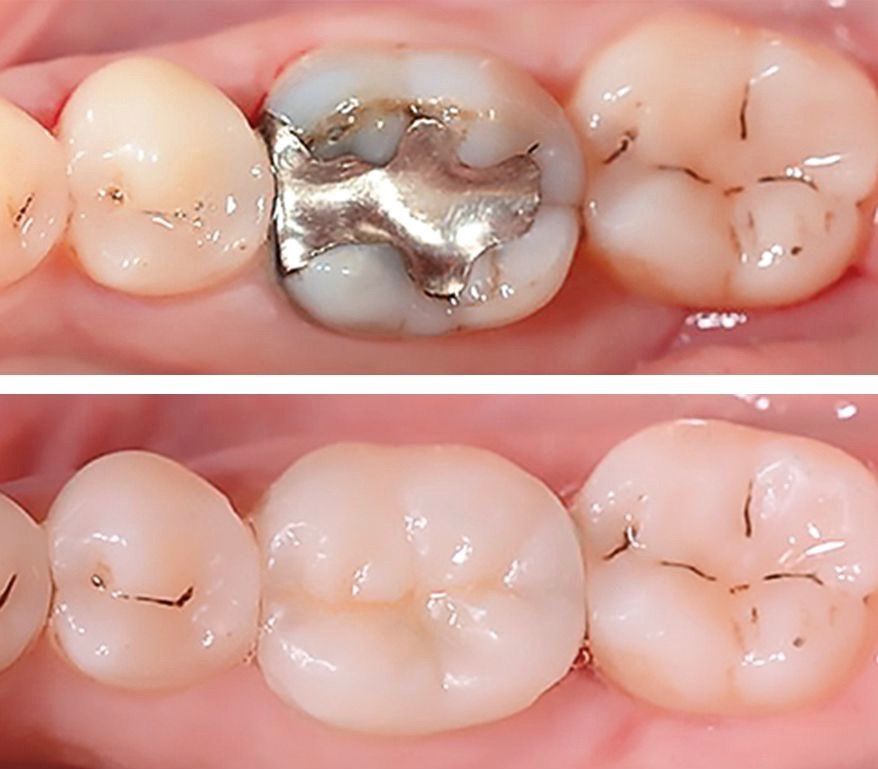Clinic specialises in restorative dentistry in Lugano
Restorative dentistry is the process of repairing teeth that are damaged, usually due to caries, but also due to fractures or colour and shape imperfections, in order to restore the functional and aesthetic integrity of the dental organ.

Aesthetic fillings
Our philosophy of perfectly bio-compatible fillings made us abandon silver-tin-mercury-based amalgam (grey fillings) several years ago in favour of very strong and durable materials.
In the case of caries or small fractures, the tooth is repaired using a composite resin that comes in a wide range of colours, so that it is completely invisible. By simply roughening the enamel through the application of an etchant and subsequent adhesive, the aesthetic material can be durably bonded.
The use of composites allows the healthy part of the tooth to be saved. Correcting the shape of the teeth and closing gaps (diastemas) between the teeth is carried out without drilling the affected teeth. For posterior teeth, where the extent and volume of the filling can be greater, it is recommended to lean towards installation of an inlay.
Dental inlay: conservative tooth reconstruction treatment
When composite resins used for the direct reconstructions polymerize (harden after light activation), they undergo a percentage of contraction. In large cavities, this can create a fissure in the enamel. In the sections with a lower adhesion, without enamel, towards the root, it may form an invisible "gap" (microspace), which can lead to caries reoccurring. To avoid this kind of inconvenience, it is preferable to use an inlay.
For an inlay, a cavity is made, then an impression is taken and the piece is developed in the laboratory. This means that the shrinkage of the material takes place before the cementation and the thin layer of adhesive is sufficient to allow perfect adhesion to the cavity. Resin inlays can be made to be perfectly invisible aesthetically, but unlike ceramics, they age before being worn away and can become discoloured over the years. The advantage of inlays is that they conserve much more of the tooth structure, as they replace only the damaged part of the tooth. If the tooth is compromised in a significant way, it will need to be reconstructed and provide greater solidity. In this case, it may be better to use a ceramic crown.


